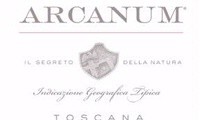Tenuta di Arceno, Toscana IGT (Italy) “Arcanum” 2010 (Sovereign Wine Imports, $100): Wine producers in the central part of Italy’s Tuscany region have been weighing the effectiveness of red Bordeaux grape varieties against that of Sangiovese, their traditional red grape, for nearly half a century. Sangiovese has held strong, as evidenced by DOCG regulations for Chianti Classico which have evolved to allow the wine to be made entirely from Sangiovese. “Other red” grapes may be part of the  blend up to 20 percent, and for many wines they are Cabernet Sauvignon, Merlot or other Bordeaux varieties, but local red varieties are increasingly preferred over Cabernet and its ilk for blending with Sangiovese.
blend up to 20 percent, and for many wines they are Cabernet Sauvignon, Merlot or other Bordeaux varieties, but local red varieties are increasingly preferred over Cabernet and its ilk for blending with Sangiovese.
Viticultural soul searching has drawn producers toward the realization that their own soils and climate are the main determinants of the best grape variety to grow. For one estate in the warm southwestern part of the Chianti Classico territory, in the commune of Castelnuovo Berardegna, the realization was that Cabernet Franc and Merlot — not Sangiovese — produce the best wines in their vineyards, along with Cabernet Sauvignon. The three red wines of Tenuta di Arceno are all blends of Bordeaux varieties, labelled with the IGT Toscana appellation, with either Merlot or Cabernet Franc dominant in each wine.
The Jackson family purchased the 2500-acre Tenuta di Arceno estate more than 20 years ago. Vineyards occupy less than ten percent of the property. These vineyards once grew Sangiovese, according to my tasting notes of ten years ago when I sampled a Sangiovese wine as well as blends based on Merlot, Cabernet Sauvignon or Cabernet Franc with Sangiovese or Syrah in the mix. Today, the focus of Tenuta di Arceno is squarely on Bordeaux varieties, with Cabernet Franc the signature variety.
The lightest of the Tenuta di Arceno’s three reds is Il Fauno di Arcanum ($30), a blend of Merlot, Cabernet Franc, Cabernet Sauvignon and Petit Verdot, at respective percentages of 48, 27, 22 and 3. The grapes come from four vineyard blocks in a warmer, earlier-ripening, area of the estate. The 2012 vintage is an approachable dry red with dark fruit aromas and flavors, particularly plum, along with savory and mineral notes, and supple texture but also marked Tuscan acidity.
Valdorno 2010 ($90) is a far richer wine, although from a cooler part of the site. Merlot dominates the blend at 60 percent; Cabernet Sauvignon (25 percent), Cabernet Franc (12 percent) and Petit Verdot (3 percent) complete the wine. This wine has a vibrant personality with juicy notes of red and black berries and red plum, along with notes of sweet spices and medicinal herbs. Although its freshness is an attraction now, it has a structure of tannin and acid to support aging.
The estate’s pinnacle is Arcanum, in 2010 a Cabernet Franc-dominant blend with Merlot at 25 percent and Cabernet Sauvignon at 15 percent, derived from two blocks of sandy-clay soil that consistently produce top quality. Although this wine has rich flavors of red and dark fruits — blackberry, black cherry, boysenberry — the fruity characters lurk behind savory notes of dried herbs, tea, and minerality so that the wine possesses more character than a straightforward fruity red. Its structure is impressive — nearly full-bodied, velvety-textured, with integrated, supple tannins and the depth of firm acidity. Complex, concentrated fruity and mineral notes linger in the wine’s finish.
Arcanum 2010 is certainly drinkable now, right out of the bottle, although it has the structure to age. You will likely discover that the wine only tastes better and better as it aerates over the course of a meal.
91 Points
